How Many Solar Panels to Power A House?
As we’ve traveled across the continent in our tiny solar powered home on wheels over the past decade, we have witnessed a huge increase in the number of solar farms along the road as well as solar panels on homes across the country – some in unexpected locations!
If you are also one of those who are ready to install their own solar panels, you might wonder how to calculate how many solar panels i need.
Get Your Head Around Solar
For many people, the terms watts, volts, and amp hours make their heads spin. “I don’t do Physics,” we’ve heard, or “my brain just shuts down.” As educators our goal is to help the scientifically challenged understand what they need to know to make smart and informed decisions about solar for themselves.
Remember, knowledge is power…and in this case, it’s the kind gathered from the sun. All you need to grasp are a few simple concepts, and leave the rest to the engineers and technicians.
If you are brand new to solar technology, we suggest you start by watching our Solar 101 video as well as read our article titled Unscrambling the Alphabet Soup of Solar Terminology. These resources will help you understand the components such as solar generators necessary to create a solar powered system for your home, RV, cabin, barn, or boat…. you may be surprised by just how simple it can be.
How many solar panels to power a house:size your system
How many watts to run a house? How many panels do you need for your home? Each family and home is different, so there is no standard answer here, even between homes with similar square footage. Your total kilowatt hours depend completely on your personal situation, including: the latitude at which you live, the climate in your area, the amount of shade your roof gets each day, the type of appliances you run and how often you use them, etc.
Sizing a solar system is similar to choosing an appropriate HVAC system for your house. There is just no one size fits all – every house has a different size and shape, located in a different climate, and so forth. There are a couple of ways to approach figuring out your personal kilowatthours:
- Start with your electric bill to see your average monthly/annual usage.
- Customize your home system by using Renogy’s interactive diagram.
- When you are ready to dive into some numbers, check out this Solar System Sizing Worksheet. It will walk you through every step of the process from determining your daily watt hours to choosing the equipment you will need – depending on whether you want to be on grid or off grid.
- Or you can make use of Renogy’s Solar Calculator.
On Grid vs. Off Grid…or Hybrid?
Depending on where you live and how you plan to utilize your solar power system, you will need to consider whether you want your home to be on grid, off grid, or a combination of both. Here’s what we mean by these terms….
On Grid System: Your home remains connected to the local electrical grid, with solar panels added to your roof and a control panel (DC combiner, DC circuit breakers, & inverter) to connect and monitor the energy tying into your home’s existing electrical system.
- If your system produces enough to cover your electrical usage, you break even.
- If it doesn’t produce enough energy in a given day, the grid automatically compensates for this deficiency.
- If it produces more than you can use, this energy is sent back to the grid. You will likely see your electric meter running backward rather than forward – and most local power companies compensate you with an offset in your monthly bill.
- If there is a regional power outage and it’s a sunny day, your system will continue to power your home (assuming you aren’t consuming more than you produce). At night or on stormy, cloudy days, you will not have power.
Note: All On Grid and Hybrid systems need to be connected to the grid by a licensed electrician. Off Grid systems can be fully DIY.
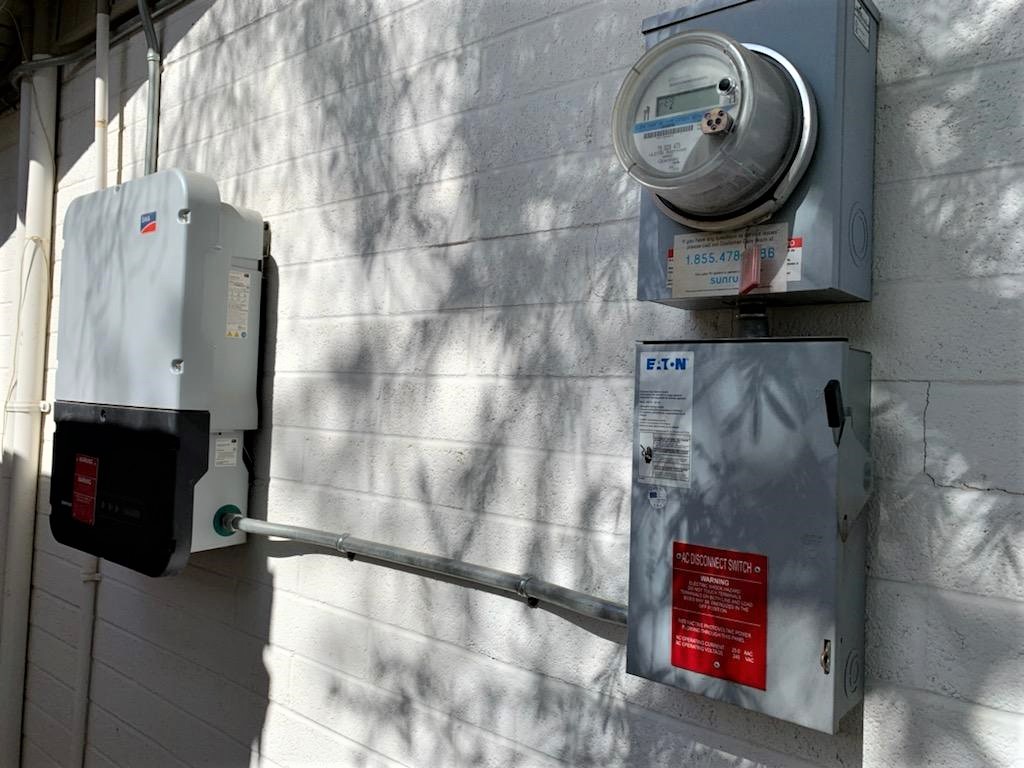
Off Grid System: Your home is not connected to the electrical grid, either by choice or because your home is too far away from a grid connection. Solar panels are added to your roof, and a charge controller, inverter, and solar panel battery are needed to monitor, store, and make the energy created by your system usable by your home appliances.
- If your system produces enough off grid solar energy to cover your electrical usage, you break even.
- If it produces more than you can use, that extra energy is stored in batteries so that on cloudy days or at night, you are able to draw from the power that you previously generated.
- If you run out of stored power, you can easily integrate a gas-powered generator that will automatically turn on.
- If there is a regional power outage, you will not be affected by it.
Hybrid System: If you live in a region plagued with frequent storms or fires which cause regular power outages, a hybrid system can be incredibly beneficial! This set-up is the best of both worlds. Your home remains connected to the electrical grid AND you add a bank of batteries to the system. The added batteries can store enough energy to make it through these extended power outages. Renogy has a great solution for this option. Check out our video review of the LYCAN 5000 to see how it works.
- If you produce more power than you can use, you keep some of that extra power and store it in batteries. When those batteries are full, the rest of the extra power goes back to the grid and you still get a monthly credit from your electric company.
- When a power outage happens in your region, your system automatically draws from the energy stored in your lifepo4 batteries, keeping your lights on and appliances running – even at night or on cloudy/rainy days.
Note: All On Grid and Hybrid systems need to be connected to the grid by a licensed electrician.Off Grid systems can be fully DIY.
Do You Have to Live in California or Florida to Benefit from Solar?
Absolutely not! We have traveled all over the continent and have been able to run our lives on nearly 100% solar from California to Maine and everywhere in between. As we’ve visited friends across the country, we have seen more and more people add solar to their homes. We recently reached out to a few of them to find out when and why they installed their system, how many panels they have to meet their energy needs, how much power they are able to generate, and how much it saves them on their electric bill.
Meet Dale & Hannah in Massachusetts
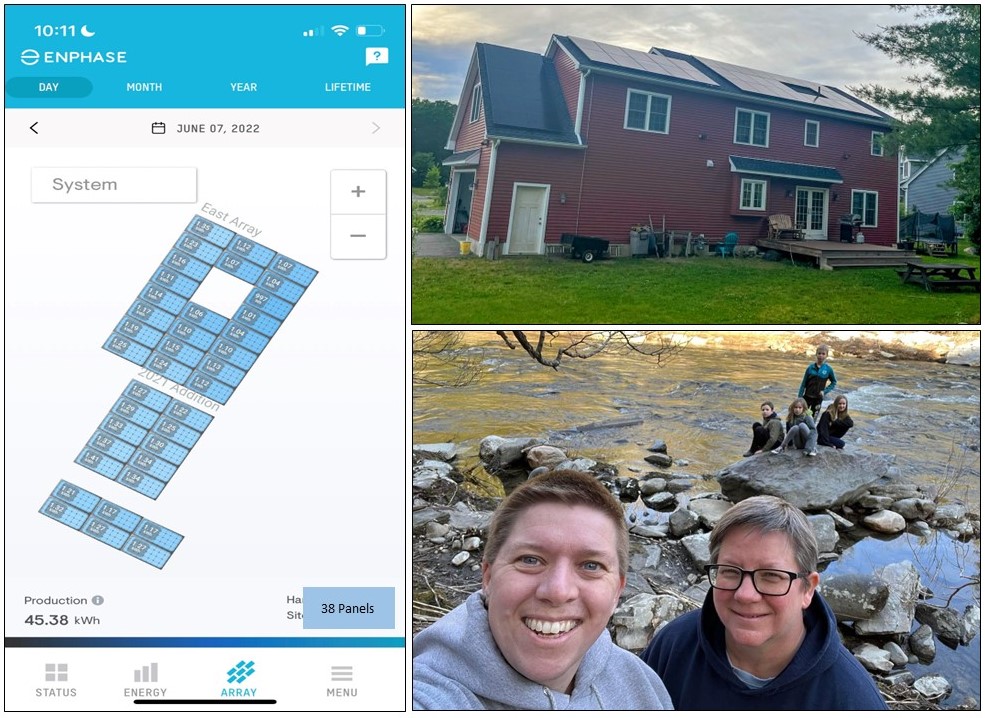
Living in Western Massachusetts was a dream come true for this family of six. Dale and Hannah work in the non-profit sector and higher education, respectively, and are raising 4 busy teenagers. In 2018, they bought a lot in a new neighborhood, built a custom home, and decided to add solar to the roof during the construction phase.
They took advantage of Massachusetts’ solar tax incentives as well as those offered by the US federal government to greatly reduce the cost of both materials and labor. Originally, they had 22 panels installed, and decided to add 16 more last year in order to further offset their electrical usage. With this addition, they now pay less than $25 per month for their electric bill, even during the winter.
Hannah told us that “We try to make good decisions about sustainability, and knowing we are doing our part to help the environment also feels great.” They recognize that they are not “perfect” (lights left on, turning the thermostat up rather than putting on a sweater), “but we do what we can!” They are very happy with their system and have had no problems in nearly 4 years!
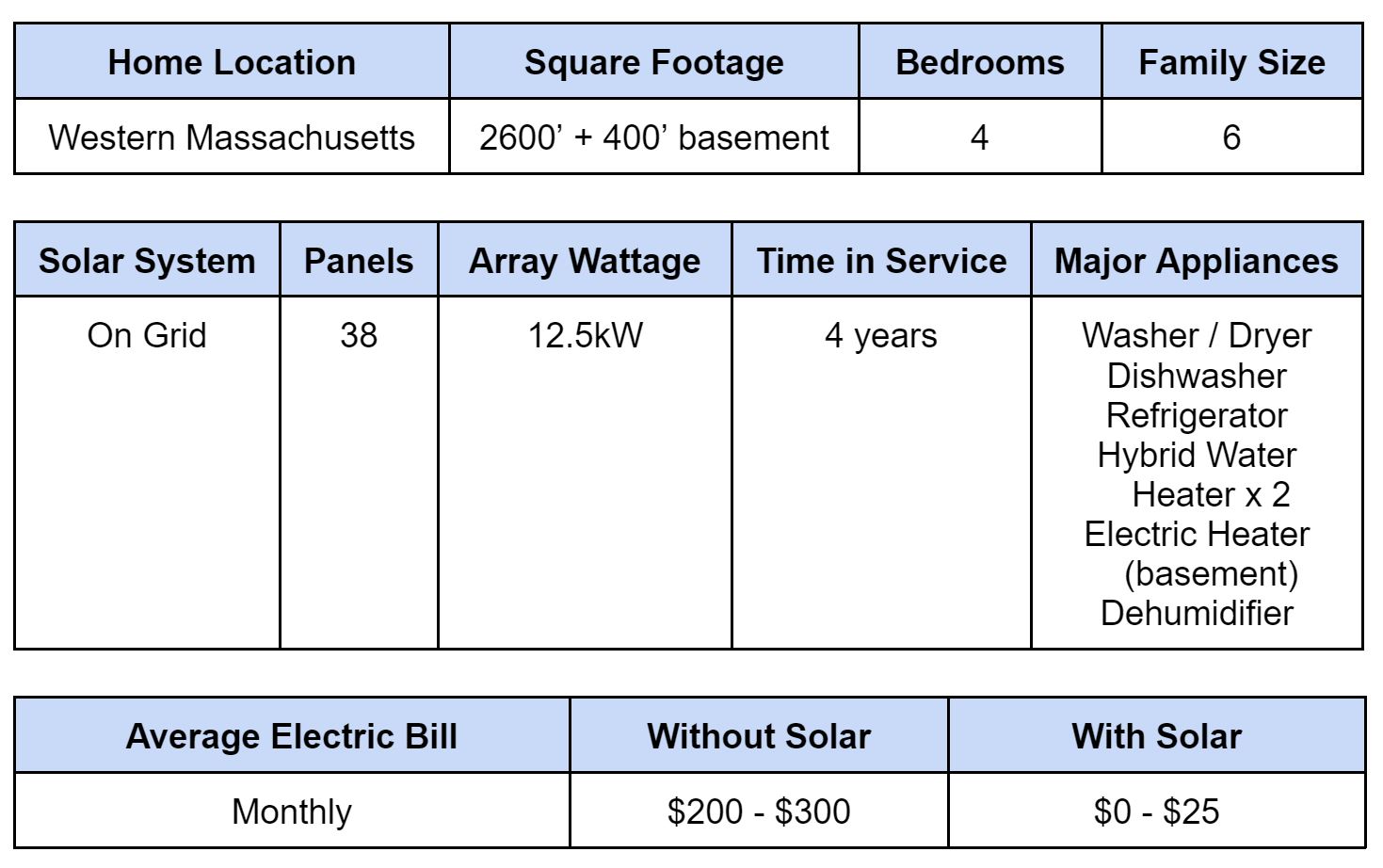
We visit these friends often, as they live along the route we take to get to and from the Maine coast for our seasonal sea kayaking jobs. Each time we visit, we are delighted to see yet another home in their neighborhood with solar on the roof, representing around 75% of the homes on their block now!
Meet Nicole & Justin in Arizona
This young couple moved to the greater Phoenix area to reduce their living expenses and finish school. We often visit them when we head to the southwest in the winter, as they are central to many of our favorite outdoor adventure areas.
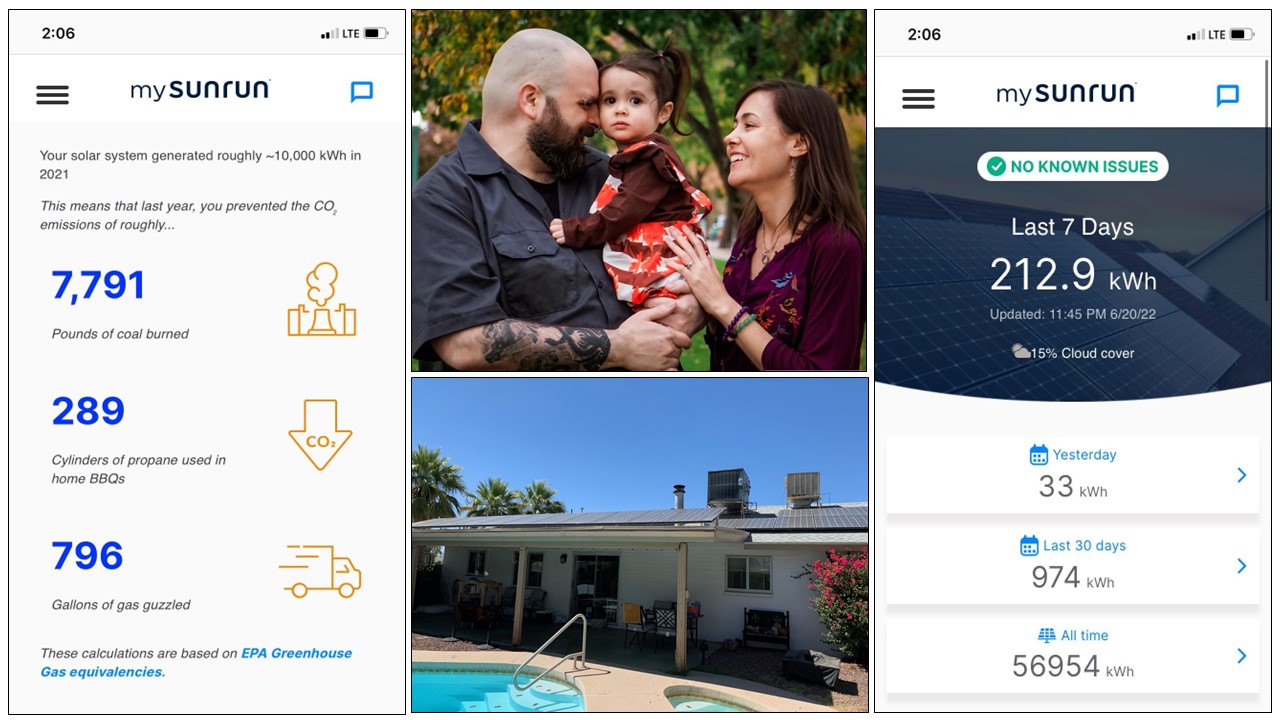
Nicole is a self-employed acupuncturist and Justin is finishing his degree in IT. Their adorable daughter is now 3 years old and Justin’s mom resides with them as well. In 2018, they purchased a newly remodeled home with an integrated solar panel array. Reducing their environmental footprint was always part of their plan even as they grew their family.
In a typical year, their system produces about 10,000 kWh, which is the equivalent of 7791 pounds of coal burned, 796 gallons of gas and 289 cylinders of propane. Pretty impressive when you look at it from this perspective!
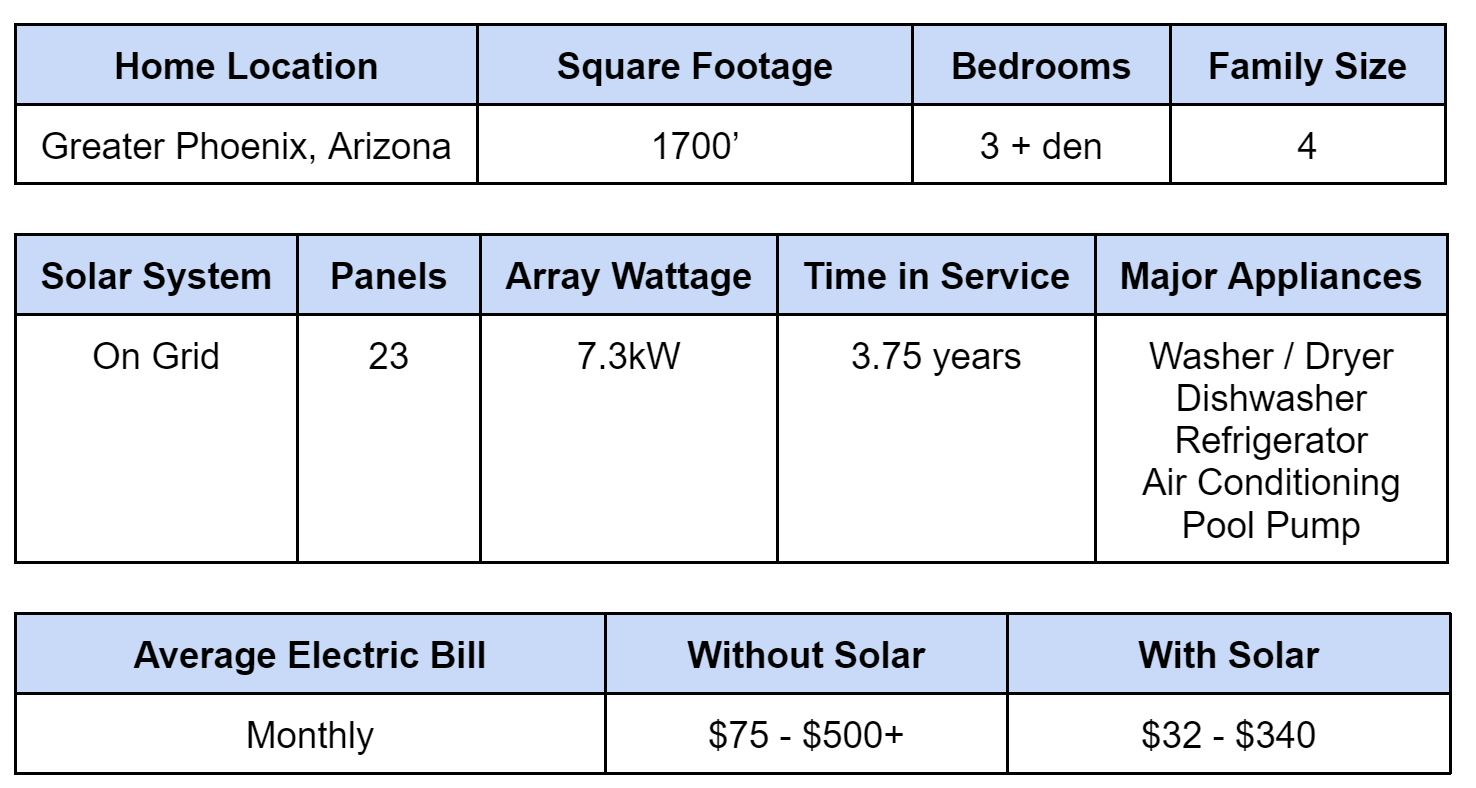
In order to thrive in the extreme desert heat in the summer, they chose a mid-sized house with a small pool in the backyard. “Solar was a huge selling point for us!” said Nicole, “as we need to run our pool pump 12 hours per day as well as air conditioning for many months out of the year.” Their solar panels help offset the electrical costs associated with those appliances, making it more financially sustainable and reducing their reliance on fossil fuels.
They told us that during the heat of the summer (August) they pay about $340 for electricity, while their neighbors with a similar home (no pool pump) pay around $500 per month. The rest of the year, their bill averages between $32 and $200. We simply can’t understand why more people in their neighborhood haven’t added solar as Phoenix has one of the highest electricity rates in the country, not to mention some of the best daily sunshine hours, and there are numerous solar tax incentives for Arizona residents, as well as from the US federal government. C’mon Phoenix, get with the program!
Meet Carla & Mark in Washington
Carla and Mark moved into their Seattle, Washington home 18 years ago, and are raising 2 active teenagers. They reside in a lovely Seattle suburb built in the 1920s and work in the medical and higher education fields. In the last few years, they’ve done some significant remodeling to their home. During our recent swing through the Pacific Northwest they proudly shared with us that they had just added 27 solar panels to their roof!
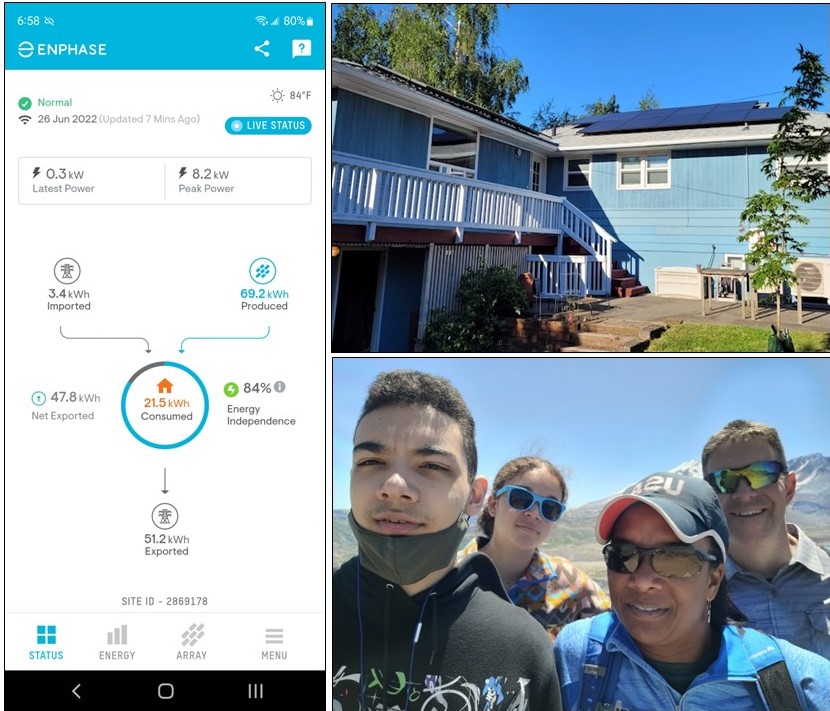
While Seattle is not exactly the sun capital of the nation, they decided to harness its energy “to do what we can to save the planet.” Mark told us that their main focus is to “reduce their load on the local public electrical grid.” During their very first month of operation their system generated 69.2 kWh, and can charge their Nissan Leaf in addition to their regular household appliances. This change has already made them nearly 84% energy independent – a very promising start indeed!
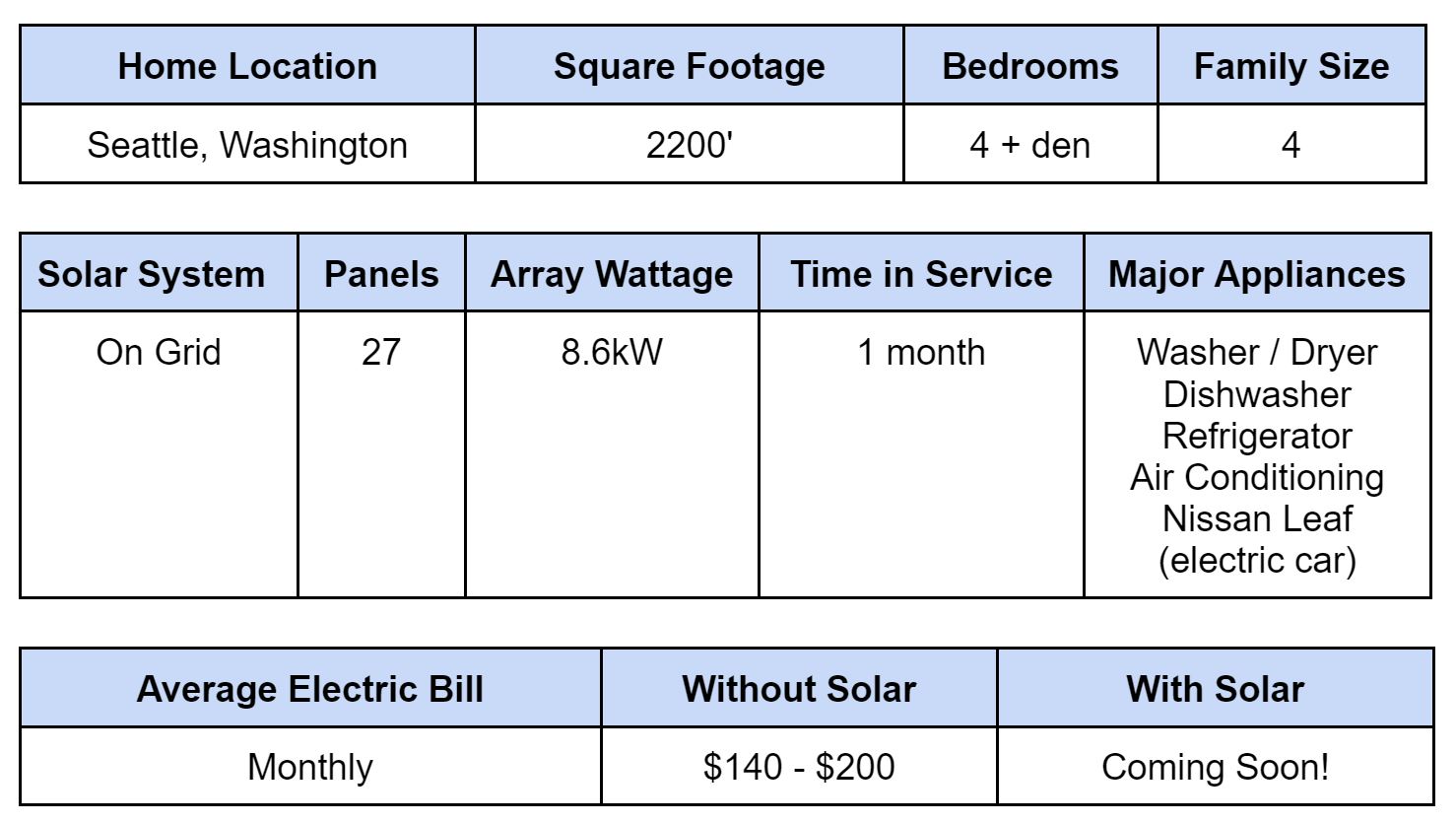
A great side benefit is their ability to take advantage of both Washington state’s solar tax incentives as well as those offered by the US federal government (before they are due to expire on December 31, 2023). They are excited to see what difference they can make over the next few years.
Solar is an accessible choice for most families regardless of their region and income. The upfront cost can be built into construction loans, added as part of a remodel, or simply purchased outright. Significant savings come in the form of reduced monthly utility bills as well as state and federal tax incentives. Check out how YOUR family can take full advantage of these tax incentives for any home – whether it is stationary, rolls, or floats.
If we have inspired you to go solar, we invite you to use our affiliate link and promo code “CANLIFE” to get a 10% discount on your order from Renogy (where you can buy solar panels of high quality and value!). It could literally save you a bundle! And, always feel free to contact us if you have further questions. We always love to hear from our readers.
Shari Galiardi & David Hutchison have turned their higher education backgrounds, desire for lifelong learning, and thirst for adventure travel into writing, photography, video production, and public speaking tours from coast to coast. Known to their friends as simply Shari & Hutch, you can learn more about their full-time, solar-powered adventures on their website at freedominacan.com. Or, follow them on Facebook, Instagram, and YouTube as “Freedom in a Can, LLC.”
See other related articles at Renogy:
Solar Panels Maintenance Best Practices And Costs
A Guide to Installing Solar Panels On Van Or RV
Solar Panels 101: A Beginner's Guide
The Ultimate Guide To DIY Off-Grid Solar Systems
How many solar panels to power a house off the grid
Do solar panels increase home value
How efficient are solar panels










